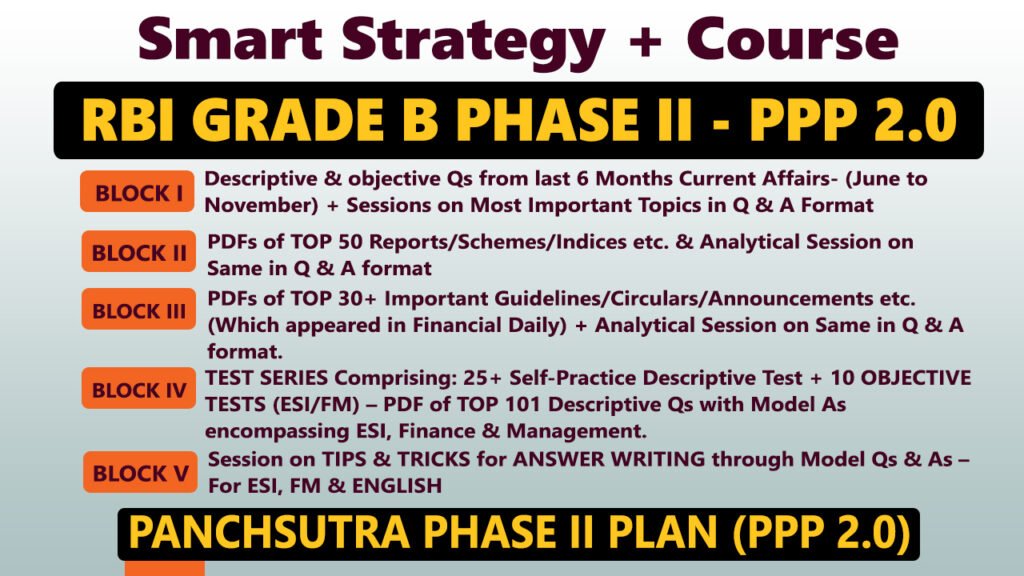Context:
The Union Finance Ministry is preparing a new blueprint for consolidation of public sector banks (PSBs) as part of ongoing banking reforms. The aim is to increase scale, operational efficiency, and capital deployment, not merely size. The timeline is expected to follow FY27, with due diligence and cost-benefit analysis underway.
Key Proposed Mergers:
| Banks Under Consideration | Rationale / Notes |
|---|---|
| Union Bank of India + Bank of India | Would create the second-largest PSB with assets of ₹25.67 trillion, just behind SBI; focus on scale and efficiency. |
| Indian Overseas Bank + Indian Bank | Operational synergies, complementary geographies, similar customer base and product portfolio, rationalization of branches and back-end functions. |
What is a Bank Merger?
A bank merger is the consolidation of two or more banks into a single entity to improve financial stability, efficiency, and competitiveness.
In such cases, one bank (the acquiring bank) absorbs the other(s), and all assets, liabilities, and operations of the merged bank(s) are transferred to it.
Purpose of Bank Mergers
- Strengthening Balance Sheets – to create large, financially stable banks.
- Operational Efficiency – reduces duplication of branches and improves economies of scale.
- Capital Optimization – better allocation of capital and reduction in cost of funds.
- NPA Management – allows stronger banks to absorb weaker ones and clean up stressed assets.
- Improved Credit Flow – larger banks can fund bigger projects and boost credit availability.
- Technological Synergy – integration of digital infrastructure and expertise.
RBI’s Role and Norms in Bank Mergers
The Reserve Bank of India (RBI) acts as the regulatory authority overseeing all bank mergers in India to ensure financial stability and depositor protection.
1. Legal Framework
- Governed by the Banking Regulation Act, 1949, particularly Sections 44A and 45.
- In case of public sector banks, mergers are carried out under the Banking Companies (Acquisition and Transfer of Undertakings) Act, 1970/1980 and require Cabinet approval on recommendation of the Finance Ministry.
- For private banks, the merger must be approved by RBI after the Boards of both banks and shareholders consent.
2. RBI Approval Process
RBI follows a multi-step approval process for bank mergers:
| Stage | Process |
|---|---|
| a. Proposal Stage | The banks submit a merger proposal to RBI with details of valuation, capital structure, and synergy plan. |
| b. Due Diligence | RBI evaluates the financial health, governance standards, and compliance history of both banks. |
| c. Valuation and Share Swap Ratio | Independent valuation experts decide how shares of merging entities will be exchanged. |
| d. Draft Scheme of Amalgamation | A draft scheme is submitted to RBI, outlining terms of merger, treatment of employees, branches, and depositors. |
| e. Public Notification | RBI may invite objections/suggestions from stakeholders. |
| f. Final Approval | RBI grants final sanction under Section 44A, and the scheme is notified in the Gazette of India. |
Key RBI Norms and Guidelines
- Fit and Proper Criteria: Both banks must have sound financials, governance standards, and compliance records.
- Capital Adequacy: Post-merger CRAR (Capital to Risk-weighted Assets Ratio) must meet minimum regulatory standards (as per Basel III norms, currently 11.5% including buffers).
- NPA Level Check: Merging banks’ asset quality and provisioning are carefully assessed to avoid systemic risks.
- Shareholder Protection: Shareholders of both banks must be given fair value through an independent valuation process.
- Employee Safeguards: Service conditions and pension rights of employees must be protected.
- No Adverse Impact on Depositors: RBI ensures continuity of depositor access and safety of funds.
- Post-Merger Compliance: The merged bank must submit reports on capital position, integration progress, and governance.
Types of Bank Mergers
| Type | Description | Example |
|---|---|---|
| Voluntary Merger | Initiated mutually by both banks with RBI approval. | HDFC Ltd with HDFC Bank (2023) |
| Forced/Directed Merger | Ordered by RBI/Government to protect depositors or stability. | Punjab & Maharashtra Cooperative Bank with Unity SFB (2022) |
| Public Sector Bank (PSB) Merger | Initiated by the Government of India with RBI oversight. | Oriental Bank of Commerce + United Bank of India → PNB (2020) |
Example (Recent Major Mergers)
| Year | Merged Banks | Merged Entity |
|---|---|---|
| 2017 | SBI and its 5 associate banks | State Bank of India |
| 2019 | Vijaya Bank + Dena Bank + Bank of Baroda | Bank of Baroda |
| 2020 | PNB + OBC + United Bank of India | Punjab National Bank |
| 2020 | Canara Bank + Syndicate Bank | Canara Bank |
| 2020 | Indian Bank + Allahabad Bank | Indian Bank |



















